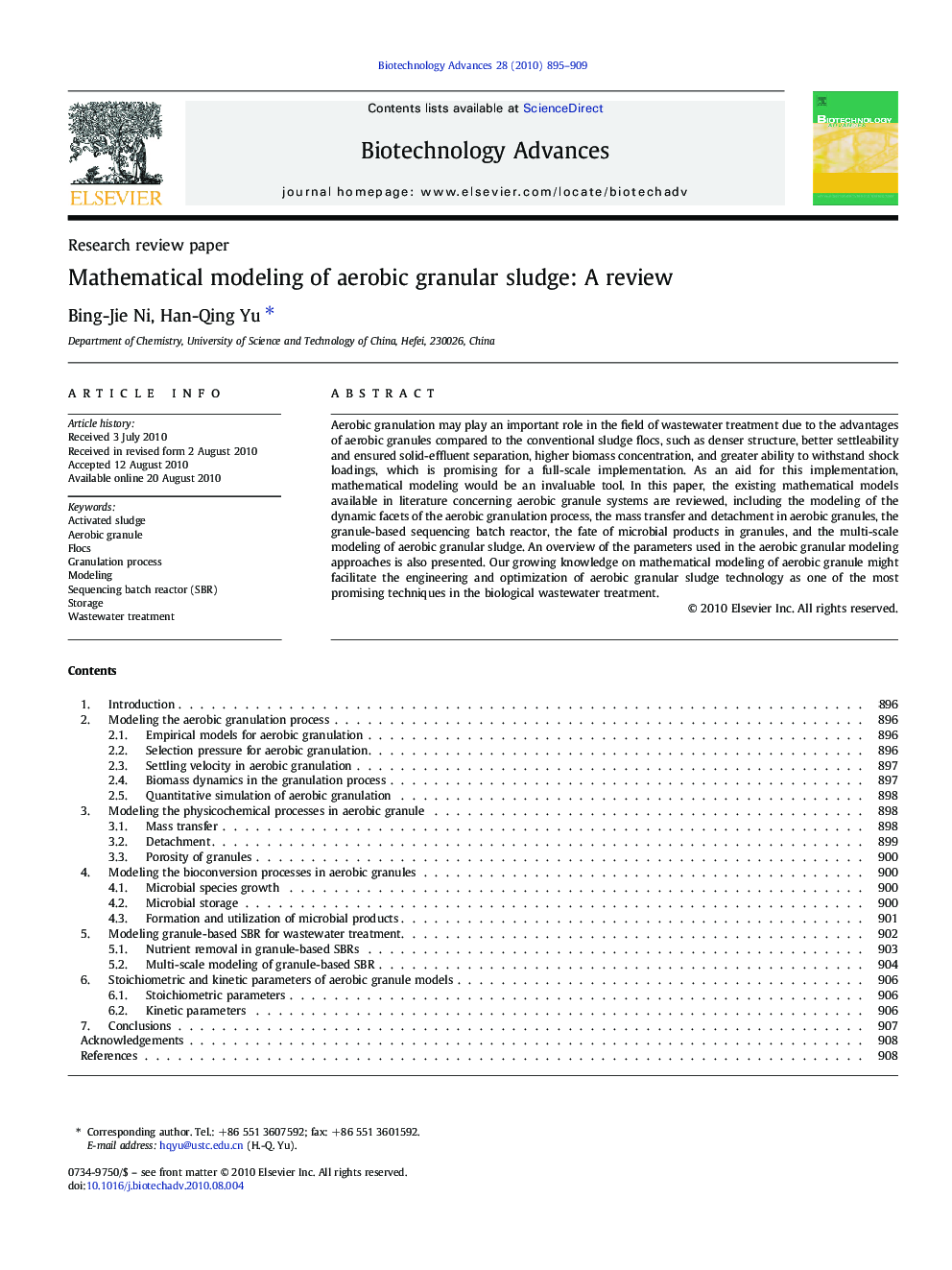| Article ID | Journal | Published Year | Pages | File Type |
|---|---|---|---|---|
| 14434 | Biotechnology Advances | 2010 | 15 Pages |
Aerobic granulation may play an important role in the field of wastewater treatment due to the advantages of aerobic granules compared to the conventional sludge flocs, such as denser structure, better settleability and ensured solid-effluent separation, higher biomass concentration, and greater ability to withstand shock loadings, which is promising for a full-scale implementation. As an aid for this implementation, mathematical modeling would be an invaluable tool. In this paper, the existing mathematical models available in literature concerning aerobic granule systems are reviewed, including the modeling of the dynamic facets of the aerobic granulation process, the mass transfer and detachment in aerobic granules, the granule-based sequencing batch reactor, the fate of microbial products in granules, and the multi-scale modeling of aerobic granular sludge. An overview of the parameters used in the aerobic granular modeling approaches is also presented. Our growing knowledge on mathematical modeling of aerobic granule might facilitate the engineering and optimization of aerobic granular sludge technology as one of the most promising techniques in the biological wastewater treatment.
